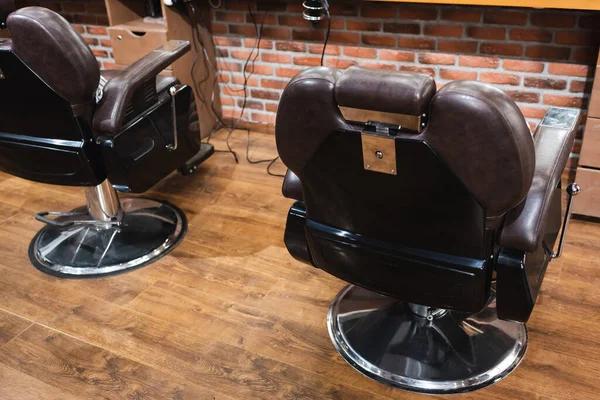The evolution of the barber chair, like any other piece of furniture, is a reflection of changing times and trends. The journey from classic to contemporary has been marked by significant developments in design, functionality and technology that have transformed the barbering experience.
The earliest known barber chairs date back to the 19th century. These were simple wooden structures with minimal padding for comfort. Back then, the main focus was on functionality rather than aesthetics or comfort. The chair was designed just to keep the client’s head at a convenient height for the barber while he worked.
Towards the end of the 19th century, as barbershops became social hubs where men would gather not only for grooming but also for conversation and camaraderie, there was a shift towards more comfortable and luxurious chairs. This led to the creation of hydraulic chairs that could be raised or lowered according to need.
Innovations continued into the 20th century with Ernest Koken, a German immigrant in America who revolutionized Barber Chair design by introducing features such as reclining backrests and footrests. He even patented a hydraulic-operated chair which allowed barbers to easily adjust their clients’ seating positions without interrupting their work flow.
As time went on, changes in fashion and lifestyle influenced barber chair designs further. With an increasing emphasis on individual style and personal grooming during mid-20th century, sleeker models made from chrome-plated steel with vinyl upholstery started replacing bulkier wooden ones.
Today’s contemporary chairs are an amalgamation of past designs combined with modern technology. They retain some elements from classical styles such as plush leather upholstery but incorporate advanced features like electric recline functions and adjustable headrests.
Furthermore, they reflect current interior design trends with minimalist lines, monochromatic color schemes or bold pops of color depending on what suits each particular barbershop’s aesthetic best.
In addition to aesthetic considerations today’s designers also prioritize ergonomics and comfort. High-density foam padding, ergonomic armrests and footrests, as well as adjustable heights and angles are now standard features in most barber chairs.
The evolution of the barber chair is a testament to how changes in society, technology and design trends can impact even the most utilitarian objects. From simple wooden structures to luxurious leather-and-chrome pieces equipped with advanced mechanical features, the journey of barber chairs mirrors our own progress as a civilization. As we continue to innovate and evolve so too will these iconic fixtures of barbershops around the world.



